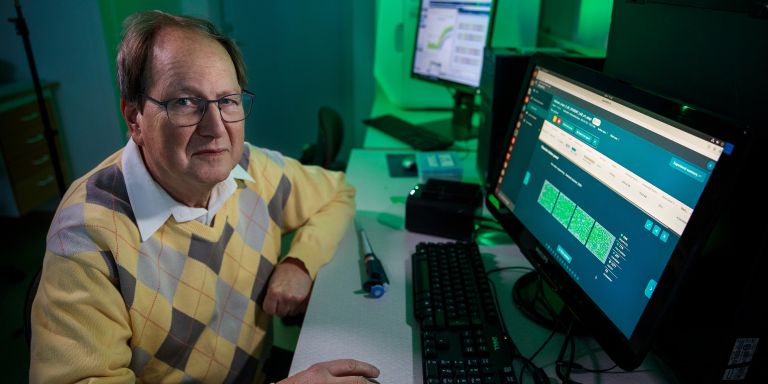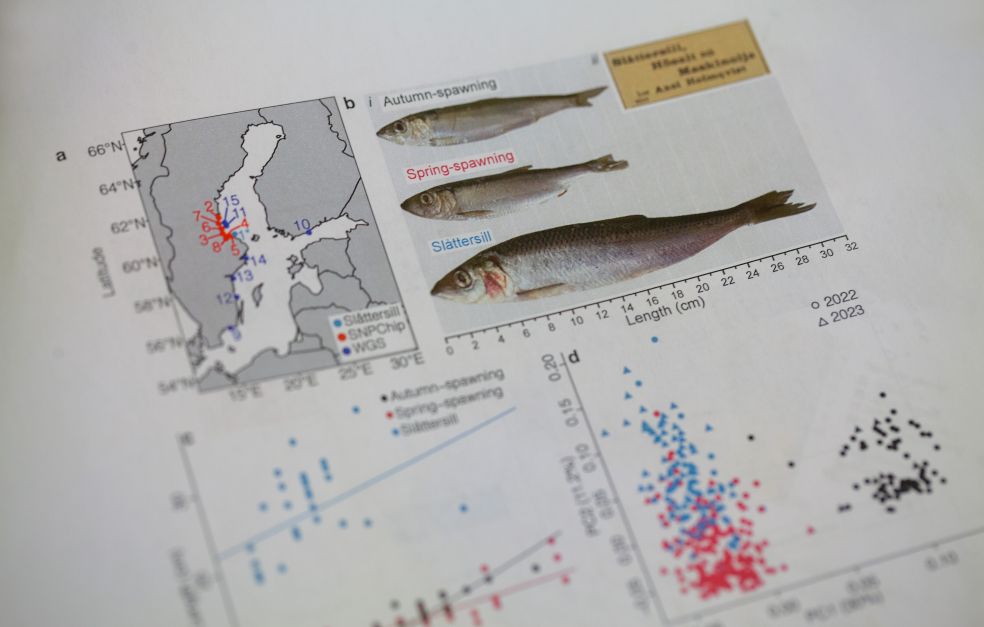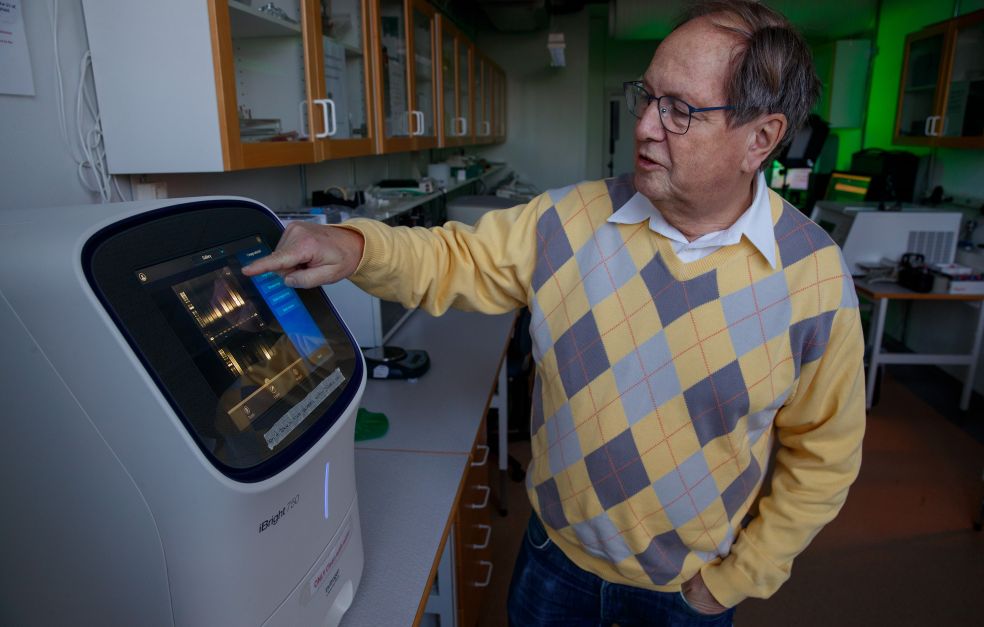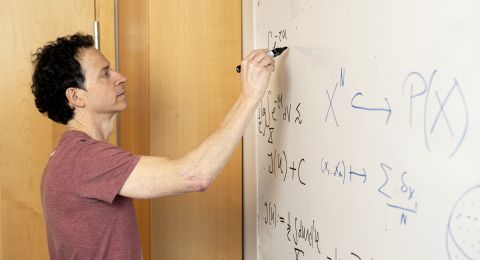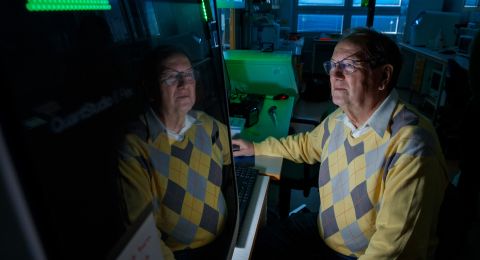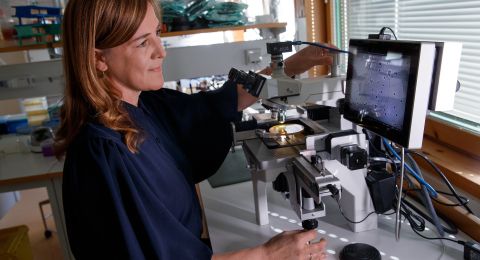Why does the ruff (Calidris pugnax) have three different male morphs, and why do some herring in the Baltic Sea eat small fish? Wallenberg Scholar Leif Andersson is examining how animals adapt to climate and environment, and models for evolution by natural selection.
Leif Andersson
Professor of Functional Genomics
Wallenberg Scholar
Institution:
Uppsala University
Research field:
How fish, birds and other animals adapt to climate and environment – the traits they acquire and the nature of their genetic evolution.
Andersson and his research team in Uppsala recently revealed that they had discovered a “piscivorous herring” that may be a new subspecies, since it eats small fish like sticklebacks (Gasterosteidae), unlike common herring, which feeds on plankton.
The fish in question are larger, coastal herring, with both a northerly and southerly population in the Baltic Sea. Along the coast of northern Sweden they have their own Swedish name (slåttersill). These piscivorous fish are much larger and fatter than common herring.
The question of what constitutes a separate species is hotly debated. A species was originally defined as a discrete population that breeds within its own group. The piscivorous herring seems to be a borderline case.
“I think that if we see a clear difference in adaptation – they behave as a separate species and largely reproduce within their group, we can classify them as a separate species,” says Andersson, Professor of Functional Genomics at the Department of Medical Biochemistry and Microbiology at Uppsala University.
Exploring genetic evolution
His research team is aiming to use advanced DNA technology to identify and understand genetic changes and evolutionary relationships among animals, and how their genes express proteins. And this is where the Baltic herring and its subspecies come in.
“The Baltic herring is such a successful model for us because it occurs in large populations, a fact that neutralizes the random variation in the frequency of different gene variants. This enables us to very accurately identify the genes in which natural selection operates. We want to understand exactly which mutation and which mechanism resulted in these differing traits. The variation is impacted by factors such as salinity, temperature and choice of food,” Andersson explains.
One aim of the research is to understand the populations better for conservation purposes.
We want to understand exactly which mutation and which mechanism resulted in these differing individual traits.
“When the EU calculates fishing quotas for herring in the Bay of Bothnia it currently assumes there is a single population. But in our research we have seen there are at least three clearly distinct populations to take into account: spring-spawning herring, fall-spawning herring and piscivorous herring.”
The research team is also delving deep into eel genetics. All eels in Europe belong to the same population. Yet eels are able to adapt to a cold sea like the Baltic and a warm sea like the Mediterranean and neighboring freshwater areas. How can eels be so adaptable without local genetic adaptation?
“This is something we’re looking into in collaboration with fellow researchers in Portugal,” Andersson says.
The researchers have caught glass eels in an estuary in Portugal, and exposed them to the variations in temperature and salinity they are exposed to in northern and southern Europe.
They are now examining how the expression of all genes in eel DNA is impacted in response to environmental changes.
Three male morphs with drastic differences in mating strategies
Another fascinating species that the team is studying is the ruff – a wading bird, which occurs in three male morphs, each with a different strategy during the “lek” (courtship display). The largest group consists of males defending territory on the lek. These birds have colorful “ruffs” (a large ornamental collar of feathers) and high levels of testosterone during the mating season. Additionally, there is a “satellite morph” with a white collar, and a small male with grayish-brown plumage that resembles the female. The satellite as well as the female-mimicking male morphs do not defend territory and have low levels of testosterone.
Andersson is now endeavoring to ascertain which genetic changes have determined the evolution of the birds’ courtship display. They have so far found that males that do not defend territory at the lekking site bear a “supergene,” an inversion of chromosome 11, which comprises about 100 genes.
Comparing Darwin’s finches with their closest mainland relative
Another group of birds that the team has in its sights are Darwin’s finches, which live in the Galápagos Islands off the coast of South America. These finches are an iconic model for the evolution of species on Earth. Andersson’s team is collaborating with Rosemary and Peter Grant, researchers based at Princeton in the U.S., who have been studying and observing the finches for 40 years.
There are 18 species of Darwin’s finches. They differ in their size, bill shape and diet – mainly various seeds or insects. They likely arrived in the Galápagos on strong winds from mainland South America some 1–2 million years ago.
To date, DNA from some 4,000 individual finches has been sequenced. Over the next few years the Uppsala researchers will be comparing the DNA of those individuals with a mainland species of finch that is closely related to the original finches that managed to find their way to the Galápagos Islands.
Text Monica Kleja
Translation Maxwell Arding
Photo Magnus Bergström

